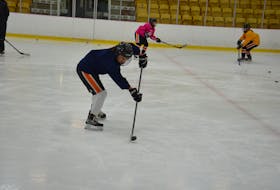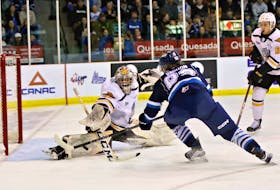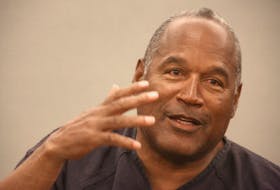What a remarkable time for women’s hockey. The first game at the storied Madison Square Garden. National television exposure across North America for the Secret Dream Gap Tour. The great advocate, Billie Jean King, there in New York to speak, powerfully as always, and lending support and investing time and encouragement.
So much to take in, so much to be excited about in so short a time.
What could be better than all this? Well, one thing.
Women’s hockey is a small sport in a large world, forever fighting to find its place. The quality of the game, which has grown exponentially over the past 25 years, more than any single sport I can think of, is not in question here.
The fractured state of the game is.
That needs to be fixed — and fast — by the two sides of women’s hockey that can’t seem to play nice together.
The best way to explain the divided state of women’s hockey to someone who hasn’t paid much attention: There is a league without many players of consequence and there are many players of consequence without a league to call their own.
The progress for the sport can only begin to determine a true financial path for the game when the sport comes together as one. Until then, a lot of paddling in circles, a lot of cheerleading from too many media cheerleaders, a lot of hope without necessarily direction.
“Ideally, there needs to be one stream, working together in cohesion, building the game. That’s the ideal model,” said Fran Rider, who is basically the mother of women’s hockey in Ontario, if not North America and probably the world.
Rider understands the building part. There was no women’s world championship before she pushed for it. There was no women’s hockey in the Olympics. She was there, with building blocks, before anyone had ever heard of Hayley Wickenheiser or Cammi Granato or Cassie Campbell-Pascall.
Now she is here, working with and supporting the Professional Women’s Hockey Players Association, pushing for some kind of daylight, a pathway to economic freedom.
She’s hoping that a two-sided sport will soon become one.
“Who does it help if we’re not all pushing in the same direction?” said Johanna Boynton, the chairman of the Toronto Six of the National Women’s Hockey League. “I think the old narrative, two sides battling against each other, that’s gone. That’s not the approach I’ve been taking in my thinking. Until the women get themselves more aligned, though, it’s going to be difficult to move forward.”
A lot has happened since the Canadian Women’s Hockey League folded under heartbreaking circumstances in May 2019. The idea then was to form a group that included the elite players in women’s hockey and find a way that they would be more than adequately compensated by their profession.
Women’s hockey had enough on its plate before COVID-19 came around. Now the challenge is significant at a time when the sport seems so eager to have more women involved.
Financially, there have been some breakthroughs. Secret, the huge deodorant people, signed on as a major sponsor for the PWHPA. That was a giant get after deals had previously been made with Budweiser, Adidas and other companies.
Discover, the credit card financial company that sponsors NHL games on NBC and the newly named Discover Central Division, signed on as a major sponsor of the NWHL. Companies seem more willing than ever to pump money into women’s hockey — but everything is divided by two rather than singularly belonging to all the women.
The NWHL, home of the barely known Toronto Six, tried to finish its season in a bubble in Lake Placid, but issues with COVID-19 put a halt to their playoffs that could still be continued. There is no season for the PWHPA, just the Secret Tour on the weekend in New York and New Jersey and later on in Chicago, a tour that has basically excluded elite Canadian players, cut out for obvious border issues.
And in all this, those playing and not playing, have created some difficulty for the stakeholders involved. It’s coming up on two years since the CWHL folded, and there’s seemingly no new league on the horizon and an Olympics to be played 11 months from now.
“I’m an optimist about this,” said Boynton. “The two missions have been impressive and committed in all they have done. It’s time to celebrate that and develop a sustainable business model for the future.”
There are two built-in problems that need to be advanced. The first is fans in the stands. The PWHPA has proven you can sell one-time events. You can even sell them to television. But can you sell an entire season, with paying customers when paying customers are allowed back?
Second, the players want to be paid working wages. Does that kind of support exist — and, if so, where? — for ticket sales and attendance of some quantity?
“When you invest in sport, you are investing in people,” said Rider. “It’s powerful to take the strength of the women’s game and watch what has been developed over time, not just the game, but the people involved in it.
“What these women have done, giving young girls a role model, showing them if they follow their dreams, anything is possible, that means something. Look at Hayley. She played for Team Canada. She was a star. Now she’s in the medical professional being a role model in COVID for all people. You’re not finished when you’re playing career stops.
“We need to keep working, keep building. I don’t know if anyone knows the answer right now, but we have to find it.”
twitter.com/simmonssteve
Copyright Postmedia Network Inc., 2021








